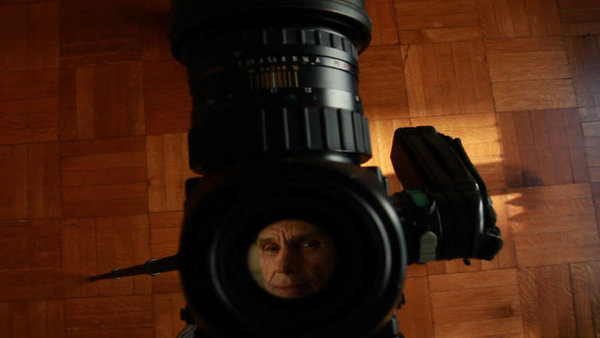The project Clandestine is an ongoing documentary project about clandestine migration from West Africa to Europe
-
tagged Christian Vium
-
the camera adds a new EXPEED 3A image processor, allowing it to shoot up to 15 frames per second with full autofocus tracking for moving subjects.
in Equipment -
the camera adds a new EXPEED 3A image processor, allowing it to shoot up to 15 frames per second with full autofocus tracking for moving subjects.
in Equipment -

In Postwar Iraq, Neither War Nor Peace
The Australian photographer Adam Ferguson discusses recent travels through Iraq, where he found neither war nor peace 10 months after American soldiers left.
via Lens Blog: https://archive.nytimes.com/lens.blogs.nytimes.com/2012/10/24/in-postwar-iraq-neither-war-nor-peace/
This is postwar photography in the context of an American presence, but Iraq is still at war with itself. In these photos, I attempted to explore the aftermath of American occupation and the current challenges facing Iraq.
tagged Adam Ferguson -
When Leica asked me to shoot with the Monochrom and articulate my impressions, I knew I could follow one of two paths: either I could look at the camera strictly within the confines of my own specific fetishes, or I could use it more liberally in situations where I wouldn’t normally be motivated to take photos. Because the latter path would benefit a wider range of sickos photographers, it became my roadmap for this series of articles.
in Leica -
With that said, I love putting a wide angle to good use in sports – mainly speaking the action. It’s usually a gamble, but without risks, you’re left wondering what a play could have looked like without one.
tagged Patrick Smithin Sports -
In the last few years, acid attacks have reduced but they continue. Hundreds of women become victims each year
tagged Khaled Hasan -

On Assignment: Photographing the Photographer
Would Rembrandt tell Picasso how to pose? What happens when one photographer — Fred R. Conrad — is sent on assignment to do do a portrait of not just any photographer, but Joel Meyerowitz, whose color work changed contemporary photography.
via Lens Blog: http://lens.blogs.nytimes.com/2012/11/21/photographing-the-photographer/
“Most of us are much more comfortable behind the lens,” said Fred R. Conrad, a New York Times staff photographer. “And to just sort of barge in on another photographer and tell him to pose … you feel kind of funny.”
tagged Fred R. Conrad -
“Alamy, the London-based stock imagery company, has announced that it will cut photographers’ commission rates from January 2013
“in Photography -

Proving That Print Still Rules in Sports Photography – PhotoShelter Blog
You know it’s not just any old game when ESPN The Magazine sends 13 photographers and 30 writers to cover the faceoff between Louisiana State University and Alabama University. The two teams are arguably the biggest rivals in college football, making for an instantly classic game – complete with hardcore fans, all-day tailgating, the biggest…
via PhotoShelter Blog: https://blog.photoshelter.com/2012/11/proving-that-print-still-rules-in-sports-photography/
“This year, ESPN The Magazine actually dedicated an entire 40-50 page issue (and an iPad version) to the event, titled ‘One Day, One Game.’ Not only that – they streamed photos live to an online gallery during the game as well. Usually the magazine will send one photographer to shoot solo, so the fact that there were 13 photographers there that day is no small feat.
“
in Sports -
Look at the Gangs Story, his most recent book. For the past 35 years, he has photographed the fringes of society which he finds so fascinating. Over these 279 pages and 140 photographs, you see the evolution of our society, from the white greasers of the 1970s to today’s uprooted immigrants
tagged Yan Morvan -
We really need to stop with this “Portrait photojournalism”. Making protagonists of a major event, whether it is a war, devastation, famine, drought, Tsunami, Hurricane and so on pose statically in front of a camera is not only boring as hell but completely useless for those of us who really want to know and experience what is going on
-

LightBox | Time
Read the latest stories about LightBox on Time
via Time: https://time.com/section/lightbox/
As a boy, he read about the mythic river. As a man, he went to find its source. Chengdu-based photographer Zhang Kechun has spent much of the last two years on the banks the Yellow River, the waterway considered both the cradle of Chinese civilization and, when it breaks its banks, its curse. “I wanted to photograph the river respectfully,” said Zhang. “It represents the root of the nation.”
tagged Zhang Kechun -
I had the immense honor of photographing United States President Barack Obama’s re-election celebration in Chicago last night/early this morning
tagged Scott Strazzante -

LightBox | Time
Read the latest stories about LightBox on Time
via Time: https://time.com/section/lightbox/
Spanish photographer Fernando Moleres traveled to Sierra Leone determined to document what he describes as “disastrous” conditions at the penitentiary
tagged Fernando Moleres -
In rewarding one picture, we are congratulating a photographer on merely one ‘fluke’ they have experienced, on one single effort they may have exerted to produce one image, that is questionable as to how much input was given from other people, and that in itself gives no indication as to whether the person really should be congratulated, esteemed, and rewarded as a ‘photographer’.
in Contests -

A Reckoning at the Frontier
The human toll of Mexico’s violent drug trade is portrayed in haunting, cinematic fashion by Eros Hoagland. His images — and how he works — reflect that struggle, as well as a more personal one.
via Lens Blog: http://lens.blogs.nytimes.com/2012/11/27/a-reckoning-at-the-frontier/
“I wanted to develop my own desert look,” said Mr. Hoagland, 43. “I was unsure how the journalistic community would take it. It was a form of manipulation. They’d say, ‘That’s not how things look.’ But to me, the way things felt kind of trumped that concern.”
tagged Eros Hoagland
